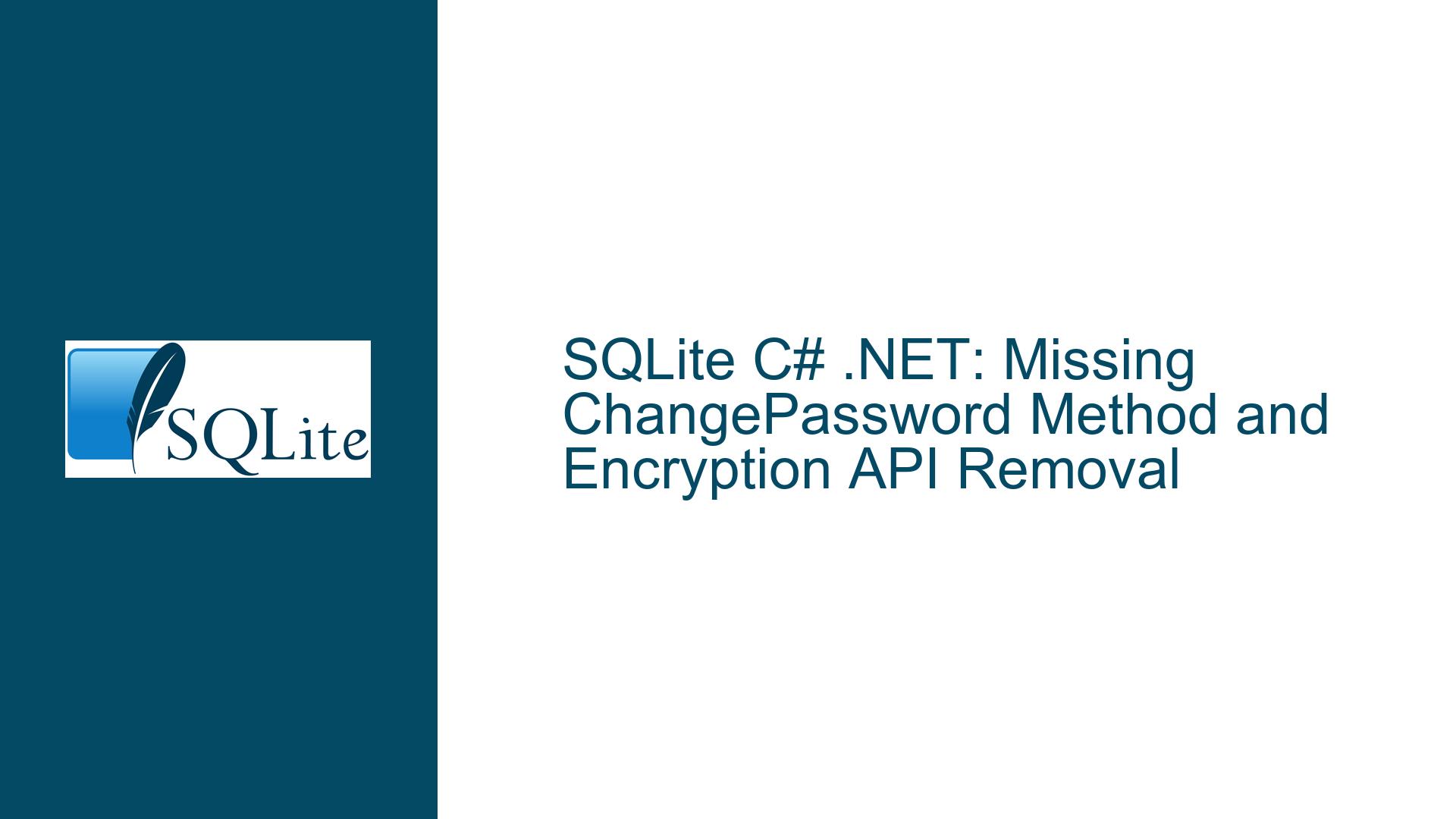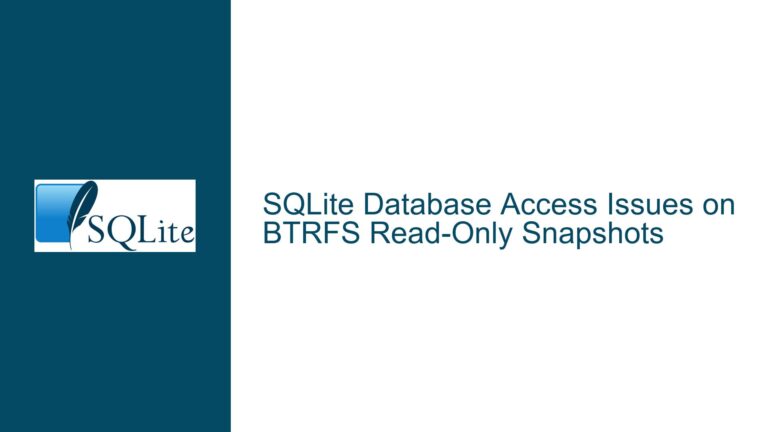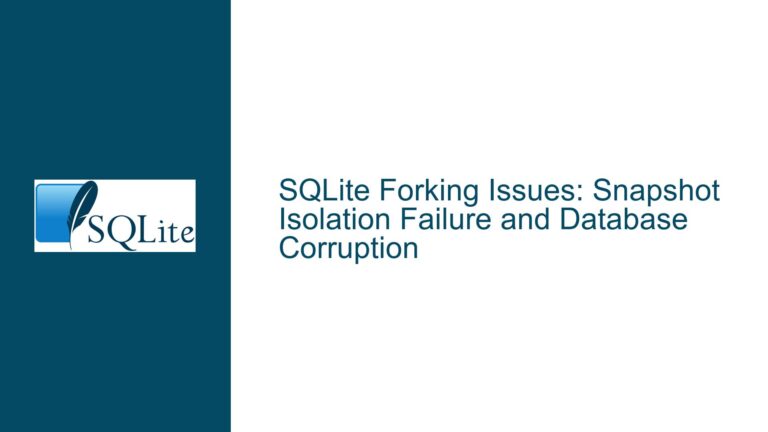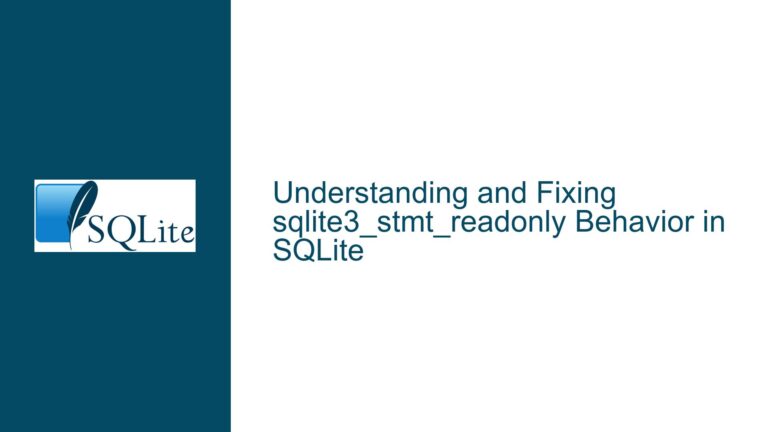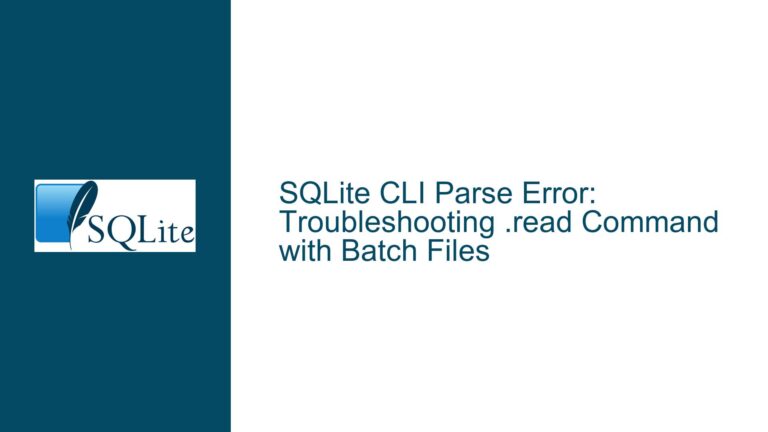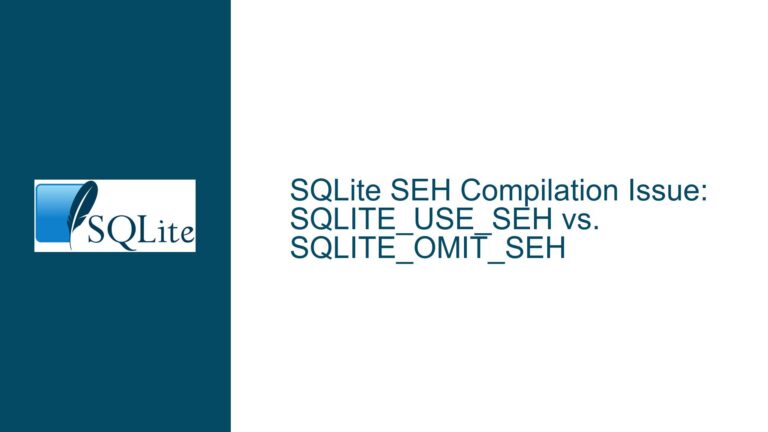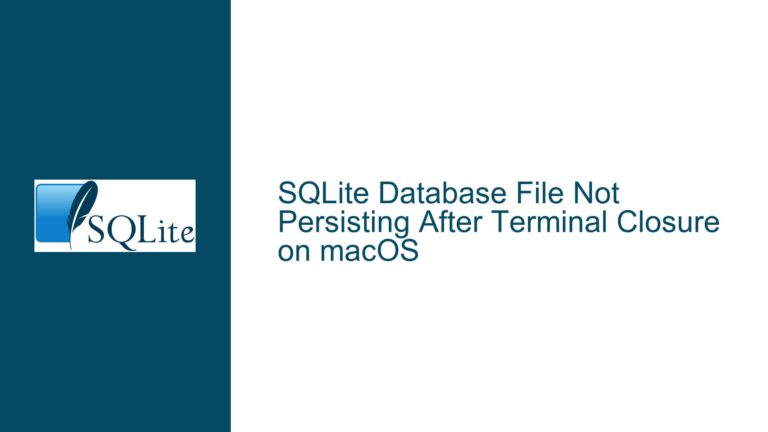SQLite C# .NET: Missing ChangePassword Method and Encryption API Removal
Removal of ChangePassword Method in SQLite C# .NET Implementation
The absence of the ChangePassword method in the latest C# implementation of .NET for SQLite has raised significant concerns among developers who rely on this functionality for managing encrypted databases. The ChangePassword method was previously used to change the encryption key of an SQLite database, a critical feature for applications requiring secure data storage. Its removal has left developers searching for alternatives to maintain database security without disrupting their existing workflows.
The ChangePassword method was part of an undocumented and unsupported encryption API that was removed in the latest update. This API allowed developers to encrypt SQLite databases using a user-defined password, which was then used to encrypt and decrypt the database file. The removal of this API has implications for applications that depend on SQLite for secure data storage, as they now need to find alternative methods to manage database encryption.
The encryption API was not officially supported by SQLite, meaning it lacked the robustness and reliability of other SQLite features. Despite this, many developers adopted it due to the lack of native encryption support in SQLite. The removal of the API has forced developers to reconsider their approach to database encryption, either by migrating to other databases with built-in encryption support or by implementing custom encryption solutions.
Implications of Undocumented and Unsupported Encryption API Removal
The removal of the undocumented and unsupported encryption API has several implications for developers. First, it disrupts existing applications that rely on the ChangePassword method for managing database encryption. These applications will need to be updated to use alternative encryption methods, which may require significant changes to the codebase.
Second, the removal of the API highlights the risks of relying on undocumented features. While these features may provide useful functionality, they are not guaranteed to be stable or supported in future releases. Developers who rely on such features run the risk of their applications breaking when the features are removed or changed.
Third, the removal of the API has left a gap in the SQLite ecosystem for managing encrypted databases. While SQLite itself does not provide native encryption support, there are third-party libraries and extensions that offer this functionality. However, these solutions may not be as well-integrated or as easy to use as the removed API, and they may come with their own set of challenges and limitations.
Alternatives to ChangePassword Method and Encryption API
Given the removal of the ChangePassword method and the encryption API, developers need to explore alternative methods for managing encrypted SQLite databases. One approach is to use third-party libraries that provide encryption capabilities for SQLite. These libraries often offer more robust and well-documented APIs for managing encrypted databases, and they may provide additional features such as support for multiple encryption algorithms and key management.
One popular third-party library for SQLite encryption is SQLCipher. SQLCipher is an open-source extension to SQLite that provides transparent 256-bit AES encryption of database files. It is widely used in applications that require secure data storage, and it offers a well-documented API for managing encrypted databases. SQLCipher supports a variety of programming languages, including C#, making it a viable alternative to the removed encryption API.
Another approach is to implement custom encryption at the application level. This involves encrypting the data before it is stored in the SQLite database and decrypting it when it is retrieved. While this approach provides greater control over the encryption process, it also requires more effort to implement and maintain. Developers need to ensure that the encryption and decryption processes are secure and efficient, and they need to manage encryption keys securely.
In addition to third-party libraries and custom encryption, developers can also consider using other databases that provide native encryption support. For example, SQL Server, PostgreSQL, and MySQL all offer built-in encryption features that can be used to secure data at rest and in transit. While migrating to a different database may require significant changes to the application, it may be a more sustainable solution in the long term, especially for applications that require robust security features.
Implementing SQLCipher for SQLite Encryption
SQLCipher is a powerful tool for adding encryption to SQLite databases, and it can serve as a direct replacement for the removed ChangePassword method and encryption API. To implement SQLCipher in a C# .NET application, developers need to follow a series of steps to integrate the library and configure it for use with their SQLite databases.
The first step is to download and install the SQLCipher library. SQLCipher is available as a precompiled binary or as source code that can be compiled on the target platform. For C# .NET applications, the easiest way to integrate SQLCipher is to use a precompiled binary that is compatible with the target platform.
Once the SQLCipher library is installed, the next step is to configure the SQLite connection to use SQLCipher for encryption. This involves setting the encryption key for the database, which is used to encrypt and decrypt the database file. The encryption key can be set using the PRAGMA key command, which is executed when the database connection is opened.
In addition to setting the encryption key, developers may also need to configure other SQLCipher settings, such as the encryption algorithm and the number of iterations used for key derivation. These settings can be configured using the PRAGMA cipher_settings command, which allows developers to customize the encryption process to meet their specific security requirements.
Once the SQLCipher library is configured, developers can use it to perform standard SQLite operations, such as creating tables, inserting data, and querying the database. The encryption and decryption processes are handled transparently by SQLCipher, so developers do not need to modify their existing SQLite code to use the library.
Custom Encryption at the Application Level
For developers who prefer to implement encryption at the application level, there are several considerations to keep in mind. First, developers need to choose an encryption algorithm that provides the necessary level of security for their application. Common encryption algorithms include AES, RSA, and Blowfish, each of which has its own strengths and weaknesses.
Once an encryption algorithm is chosen, developers need to implement the encryption and decryption processes in their application code. This involves writing functions to encrypt data before it is stored in the SQLite database and to decrypt data when it is retrieved. These functions should be designed to handle large amounts of data efficiently, and they should be tested thoroughly to ensure that they work correctly in all scenarios.
In addition to implementing the encryption and decryption processes, developers also need to manage encryption keys securely. This involves generating strong encryption keys, storing them securely, and rotating them periodically to reduce the risk of key compromise. Developers should also consider using key management services (KMS) to handle key storage and rotation automatically.
Finally, developers need to ensure that the encryption process does not introduce performance bottlenecks in their application. Encryption and decryption can be computationally expensive, especially for large datasets, so developers should optimize their encryption code to minimize the impact on application performance.
Migrating to Databases with Native Encryption Support
For applications that require robust security features, migrating to a database with native encryption support may be the best long-term solution. Databases such as SQL Server, PostgreSQL, and MySQL offer built-in encryption features that can be used to secure data at rest and in transit, and they provide well-documented APIs for managing encrypted databases.
Migrating to a different database involves several steps, including exporting data from the existing SQLite database, importing it into the new database, and updating the application code to use the new database. Developers should also consider the impact of the migration on application performance, as different databases may have different performance characteristics.
Once the migration is complete, developers can take advantage of the native encryption features provided by the new database. For example, SQL Server offers Transparent Data Encryption (TDE), which encrypts the entire database at rest, and Always Encrypted, which encrypts data at the application level before it is sent to the database. PostgreSQL offers the pgcrypto extension, which provides functions for encrypting and decrypting data, and MySQL offers the AES_ENCRYPT and AES_DECRYPT functions for encrypting and decrypting data.
Conclusion
The removal of the ChangePassword method and the undocumented encryption API in the latest C# implementation of .NET for SQLite has significant implications for developers who rely on these features for managing encrypted databases. While the removal of the API has left a gap in the SQLite ecosystem, there are several alternatives available, including third-party libraries like SQLCipher, custom encryption at the application level, and migrating to databases with native encryption support.
Developers should carefully evaluate their options and choose the solution that best meets their security requirements and application needs. By taking a proactive approach to database encryption, developers can ensure that their applications remain secure and compliant with data protection regulations, even in the face of changes to the underlying database technology.
